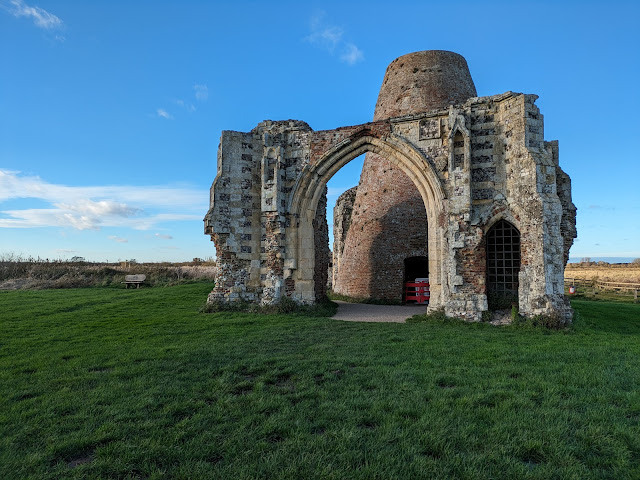Brexit and the Conversion of the English
Prof Susan Oosthuizen's Emergence of the English redirected my attention to Prof Tom Williamson's interesting view of the North Sea and its waterways published in East Anglia and Its North Sea World.
In relation to the Conversion of the English, not only do I have to accept the likelihood of the continuation of Christianity in East Anglia in the post-Roman era, for example, at Norfolk's two places named Eccles; but also the ongoing links with Europe once the Church had rooted itself in Anglo-Saxon society,
St.Felix came to East Anglia from in 630 or thereabouts, with King Sigeberht who had been in exile in Merovingian lands. The next generations of church leaders gave us Botolph, who had his monastic formation at Faramoutier (not far from Paris), where Saethryth (sister of Withburga of Dereham and Elthelburga of Ely) was abbess. Hilda of Whitby's sister, Hereswith, who had married into the East Anglian royal family, became abbess of Chelles; a house which was founded by the East Anglian slave, Bathilde, who had married King Clovis bore him three sons. Boniface and a series of other Anglo-Saxon missionaries helped establish Christianity in Frisia and Germany; and Alcuin was active in the service of Charlemagne,
If we understand the sea, or whale-road as the Anglo-Saxon poets called it, as a connector, rather than a barrier to keep invaders out of England; we come to understand the connected-ness of our island to the mainland. Nor should be allow our modern categories of people and nation states to blind us to the connected-ness. Beowulf, the earliest (8th C) written document in Anglo-Saxon, has a Geat hero, who has a Swedish relative and they come to the aid of a Danish king. We have a tendency to believe such people are Vikings and shouldn't be coming in to Our Island's Story until the first Viking raids at the beginning of the 9th C.
When the conversion of Scandinavian lands reached its final phase with the Conversion of Iceland it was due to Olaf Tryggvason's less the peaceful urging. Olaf had come to faith with his encounter with a Christian holyman he bumped into while repairing his longboat in the Isles of Scilly!
Longboats, you see, even before the Vikings there were longboats, the ship burial at Sutton Hoo is a longboat of sorts. Even the trading vessels that brought the stone to build Norwich Cathedral Normandy (Normans are only Frenchified Norse-men!) were a type of longboat.
I have come to realise I cannot think about the Conversion of England on its own. one has to see it as the Conversion of Europe!
And even right through the Protestant Reformation to the Glorious Revolution and the appointment of William of Orange and Mary in 1689 Christianity in England was deeply enmeshed with Christianity in Europe as a whole.




Comments